Special Trip Report: flying the 727 between Porto Alegre and São Paulo
The only certainty I ever had during my school years was that, from Monday to Friday at 23h30, I’d hear the same old noise over my house, which is a little bit far from Porto Alegre, southern Brazil.
It’s a classic from the golden years of aviation: a cargo 727, operated by Total Linhas Aéreas, bringing express mail to São Paulo.
So it’s no wonder why I always dreamt of flying that bird. When I «officially» started planespotting, back in 2014, that wonderful trijet would always be there, sitting in the apron, waiting for its night duty.
When I knew I was going to Brazil to see my family, I rushed to set this a 727 flight up; it was something I’d come up with during the era of COVID restrictions so it didn’t happen while I lived in the country, but with the rules being loosed, I knew that was my window.
Essentially, these old aircraft still operate for a special reason; because they fly very little and they are owned by the airline, maintenance costs do not affect to much the airline’s financials.
This makes them perfect for the mission they are deployed: the Rede Postal Noturna, literally «nightly postal network», hired by Brazil’s Correios, the national mail corporation, flying trunk domestic routes on behalf of its express delivery services.
Total Linhas Aéreas has three of these contracts, encompassing three routes: Porto Alegre-São Paulo-Porto Alegre, Florianópolis-Curitiba-São Paulo-Curitiba-Florianópolis and Vitória-São Paulo-Rio de Janeiro-Vitória. The other routes are operated by fellow cargo airline Sideral, which for some time operated the 727, but currently has a fleet of Boeing 737 Classics only.
I didn’t know what to expect of this flight report, though you’ll definitely won’t see my food critic side here – rather my aviation enthusiast side…
TTL5678 POA-GRU
I was so hyped for this flight that I arrived an hour before at the «backstage» door I was supposed to meet the crew. They sure arrived at the right time, not a minute more.
Then I met Captain André, First Officer Gisele and Flight Engineer Folhadella. We went through security check and a van of the handling operator was already there, just waiting for us.

While the Kombi crossed Porto Alegre terminal’s luggage processing area, passing by the Azul, GOL and LATAM aircraft that flock the terminal at that time in the evening, I introduced myself to the Captain, who is the second pilot in Total’s seniority list.
He had entered the airline in the Embraer Bandeirante years, flying the ATRs before the company merged with TRIP and being promoted to the 727 once they were incorporated to the fleet in the early 2000s.
FO Gisele started its career in aviation as a ground agent at Transbrasil, then flying for air taxis across the country and finally settling down in Total some years ago. FE Folhadella had also plenty of experience, having served the Brazilian Air Force and also Aerobrasil Cargo; all in all, it was a team full of experience taking care of this bird.
The trip to the apron where the 727 usually stays was short – Porto Alegre Airport is quite compact – and soon the dispatcher was briefing the Captain over this run of the mill to São Paulo.
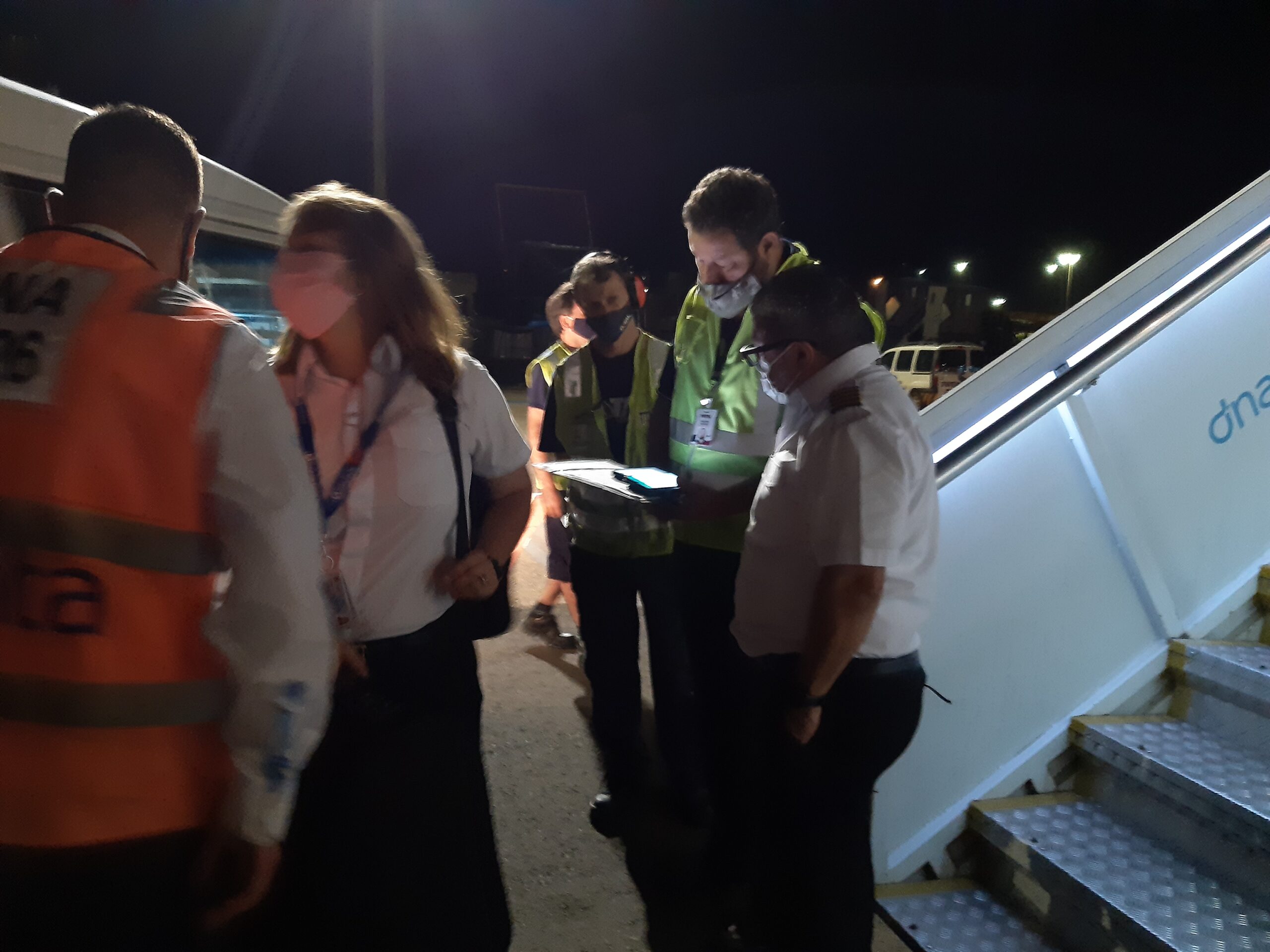
However, the three soon got up the stairs and into the cockpit, as there was plenty to do before the flight; loading was already being started.
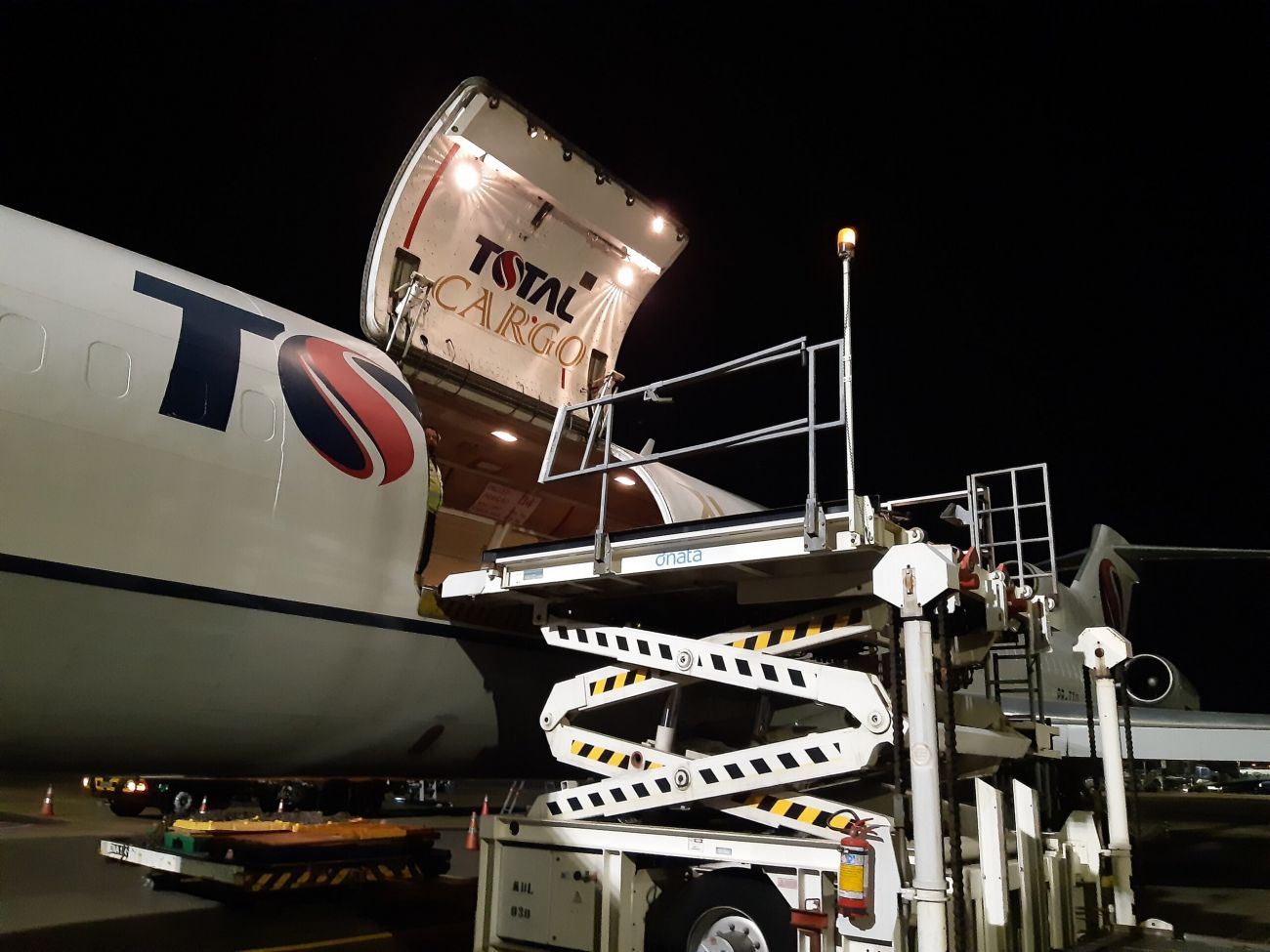
The trijet deployed on this mission was PR-TTO, a 727 full of history.
According to JetPhotos.net’s database, MSN 21200 and LN 1206 was manufactured in May 1976 (yes, 45 years ago!). It was the first 727-200 delivered to the legendary Hughes Airwest, in August that same year, as N721RW.
The frame survived two of the company’s mergers – into Republic Airlines in 1980 and into Northwest Airlines in 1986 -, in 1997 being ultimately transfered to Express One International, a cargo operator of the late stages of the Century, that converted it into cargo.
Its last operator in the States was Custom Air Transport (CAT), which leased it in 2002 – that was 20 years ago; just to give you an idea of time, it was not until 2003 that Northwest retired its last 727, so back then it was still not a rare airframe.
Before CAT went bust, in 2007 Total Linhas Aéreas bought it from the lessor, bringing it in August that year as, for the first time, SN 21200 changed its original registration, becoming PR-TTO. Since then, Tango Oscar has been going strong as one of Total’s flagships.
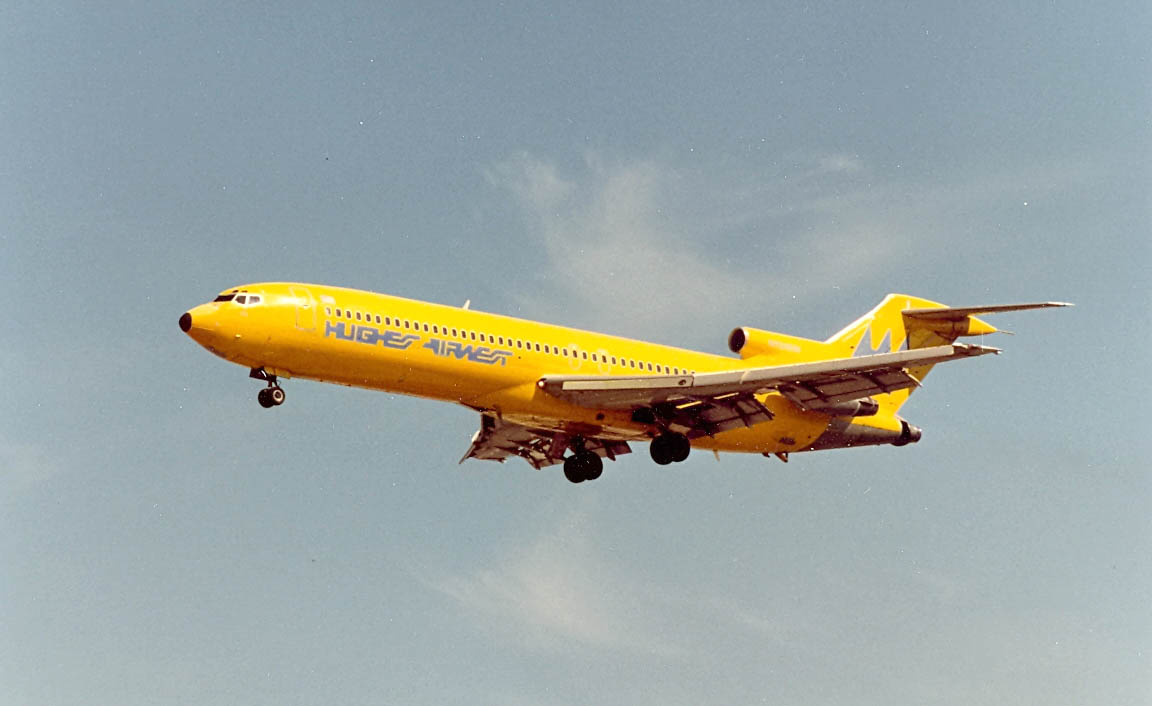

But enough with the History lesson as I had a flight to write about.
The cockpit, with all those analogic displays, looked much more complex than I think it actually is, from what I observed the pilots’ workload.

An important part of this «complexity» impression is the flight engineer’s panel.
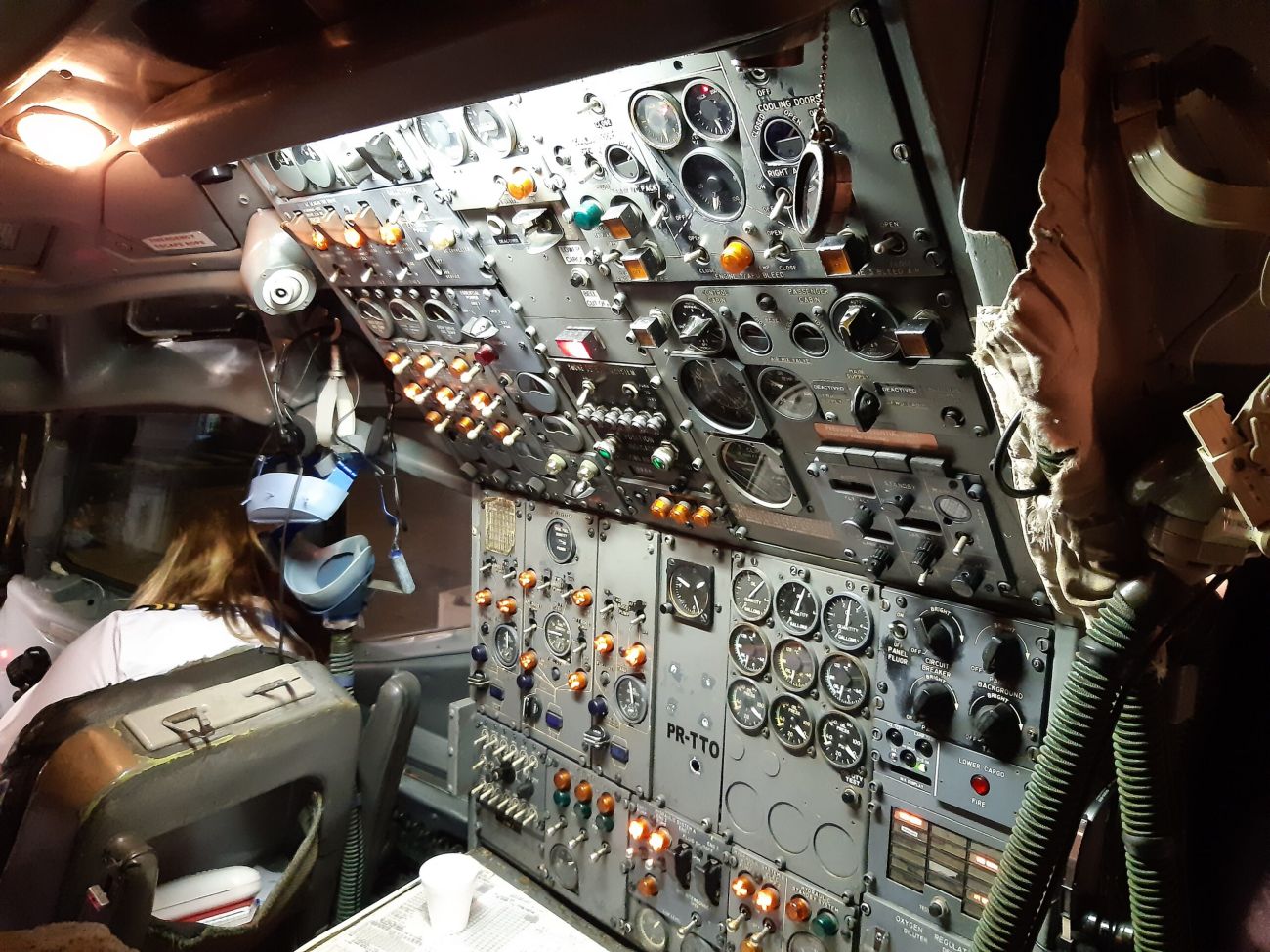
Old projects like the 727 have this third component in the cockpit to monitor the normal behaviour of the systems, as well as providing ideal engine parameters for each phase of the flight (which is why the FE was always filling a sheet and handing it to the pilots), as well as serving as a third brain in case of equipment failure, in a way that reduces the relative workload of the pilots.
New projects with more advanced technology have incorporated this troubleshooting capabilities into its systems in order to provide a safer operation with two people only.
The flight to São Paulo that night would be quite uneventful, with basically clear skies all the way, apart for some cloud formations near Florianópolis that, nevertheless, did not happen to affect.




I was then invited to follow the FE’s walkaround. It was very special to do it in the apron of my home airport and I hope the photos, despite grainy, can show a little bit more of this classic aircraft.
By the way, through those stairs the FE could inspect the inside of engine two, and the transition between the air intake and the exhaust was clearly visible.












Departure time approached and so preparations for the flight. By our side, Azul’s cargo ATR to Guarulhos and Vitória left some minutes before.







Soon Captain André started his briefing with the crew. If anything went wrong in Guarulhos, our prefered alternate airport would be Rio/Galeão, although we had more than enough fuel and the 727 was far from its maximum take-off weight, which meant take-off would be performed with reduced power.



For this leg, Captain André would have the controls and FO Gisele had the communications. After she got the clearance for Total 5678, pushback was started, along with the startup of the engines in sequence, from 1 to 3.
It was surprising to me that the engines were not at all loud, but I think it was because they were so far from us, at the tail. In fact, it was a silent experience, all in all!
Taxi to the active runway, 11, was very short and we had to wait for a LATAM Airbus to land before we lined up.
«Total 5678, cleared for take-off runway 11, wind 130 degrees, four knots».
At 23h41 Captain André started to bring the trio of thrust levers forward, and the three Pratt & Whitney JT8D-17 engines came to life; Tango Oscar roared through Porto Alegre’s single runway for another flight to Guarulhos.
In the videos that follow I apologise in advance for the shaking, as I was quite nervous and anyway I had not many places to hold the camera. Suffice to say that observing an operation I’ve dreamt of watching numerous times made me quite happy.
15 seconds after brakes were released, FO Gisele called «80 knots»; the «V1» callout came 12 seconds later, with «rotate» being ordered immediately after that.
That 45-year old bird flew beautifully. Ten seconds after rotation, «positive rate» was announced and the captain ordered «gear up».
With few departures at that time in the evening, it was quite a lonely night in Porto Alegre’s departure frequency.

After the transition altitude was crossed, the crew could settle down a little, after which FE Folhadella went to the back of the cabin to get the dinner.
Luckily they had boarded four meals. I took the meat option.



It was divided in three courses and the main course was warm… not bad for a cargo flight from Porto Alegre to São Paulo.
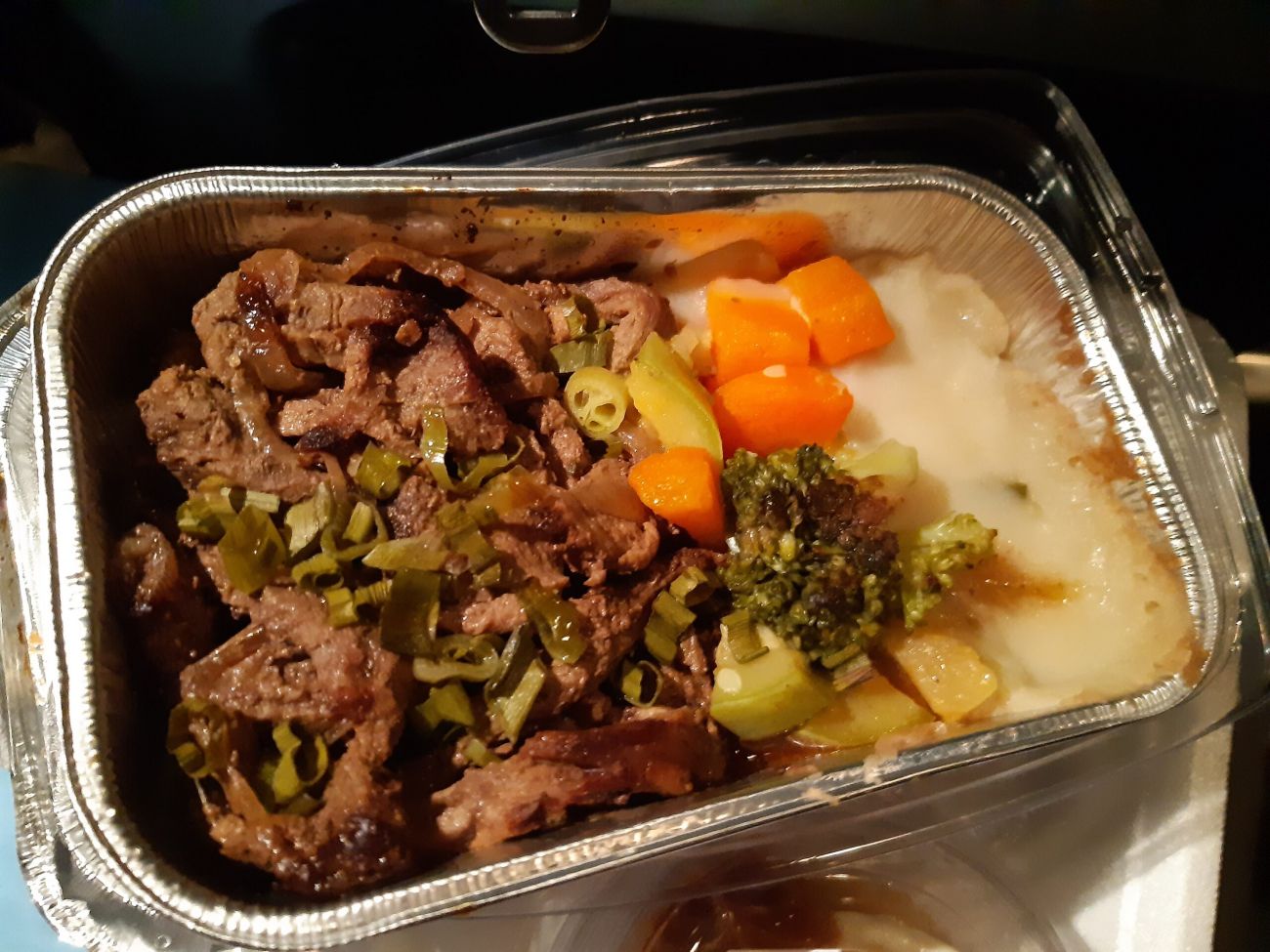
Naturally the pilots did not eat at the same time – one was always monitoring the controls – but, as it happens, the workload from the 727 to a modern aircraft does not change much. Total has installed, on the screens below the central panel, an interactive route planner with presets that can control the autopilot.
So, although navigation through the old methods like ADF is possible, it is obviously not used, as the Garmin system did practically everything a modern FMS can do.
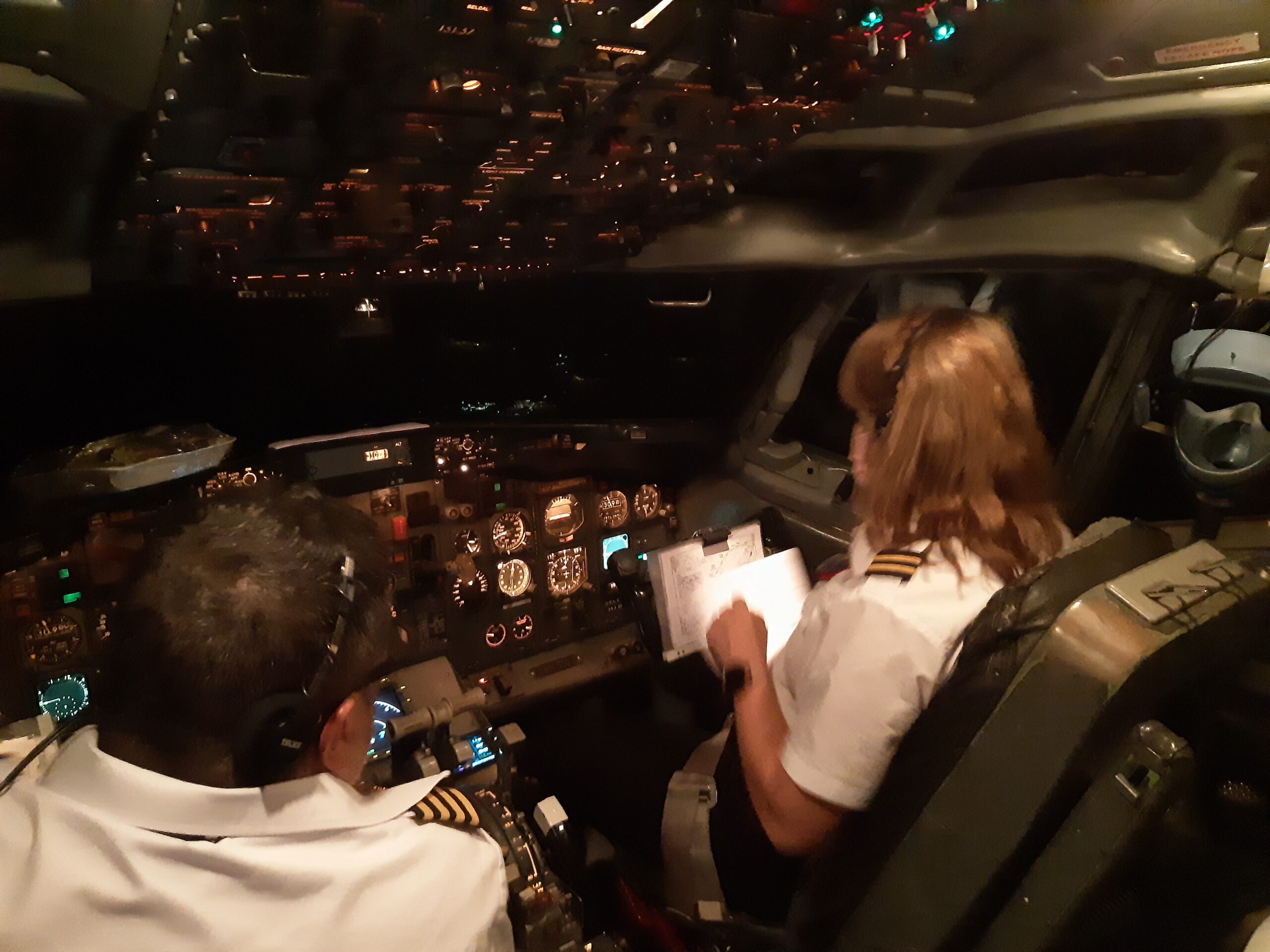
The only thing that didn’t work was the autothrottle, which, in Total’s fleet of 727, is disabled. That’s why the Flight Engineer would issue the parameter sheets even for cruise and descent phases of the flight. He had the authority, by the way, to move the thrust levers from time to time as well.
I asked the crew if I could see the lavatory and there I went. Not much to see, unfortunately, but it didn’t look like those modern aircraft bathrooms – I wonder if they modified it or if they were like this in the 727. By the way, those rusty signs in English showed some signs of TTO’s previous operators, so that’s nice.





Back to the cockpit I was greeted with an uneventful cruise over Paraná state – luckily they had boarded some coffee, so everyone was alert.
The crew handled everything so professionally – they are really fortunate to operate these old birds these days, but so is the old 727’s fortune to be taken care of by these professionals. While the two pilots would proceed to Curitiba and Florianópolis, the Flight Engineer would head to Rio and Vitória.





As we cruised 33,000 feet over sea level and got closer to São Paulo, descent was started. More paperwork filled by the FE to the pilot and more engine parameters.
Although little to no domestic flights leave after midnight from Guarulhos, this is the rush hour for the cargo haulers as, in less than two hours, eleven freighters arrive in the country’s largest gateway from major capitals of Brazil. Of these, all are bringing express mail hired by Correios.
So it’s come as no surprise that Total 5678 was sequenced in order to give more space to the flight in front – another of Total’s 727s, by the way – and that the Guarulhos Approach frequency was flocked with the «Total» and «Sideral» callsigns, Correios’ only two providers into Guarulhos.
But ultimately it was a wonderful night for flying and the view of Latin America’s largest the city was as bright as day.
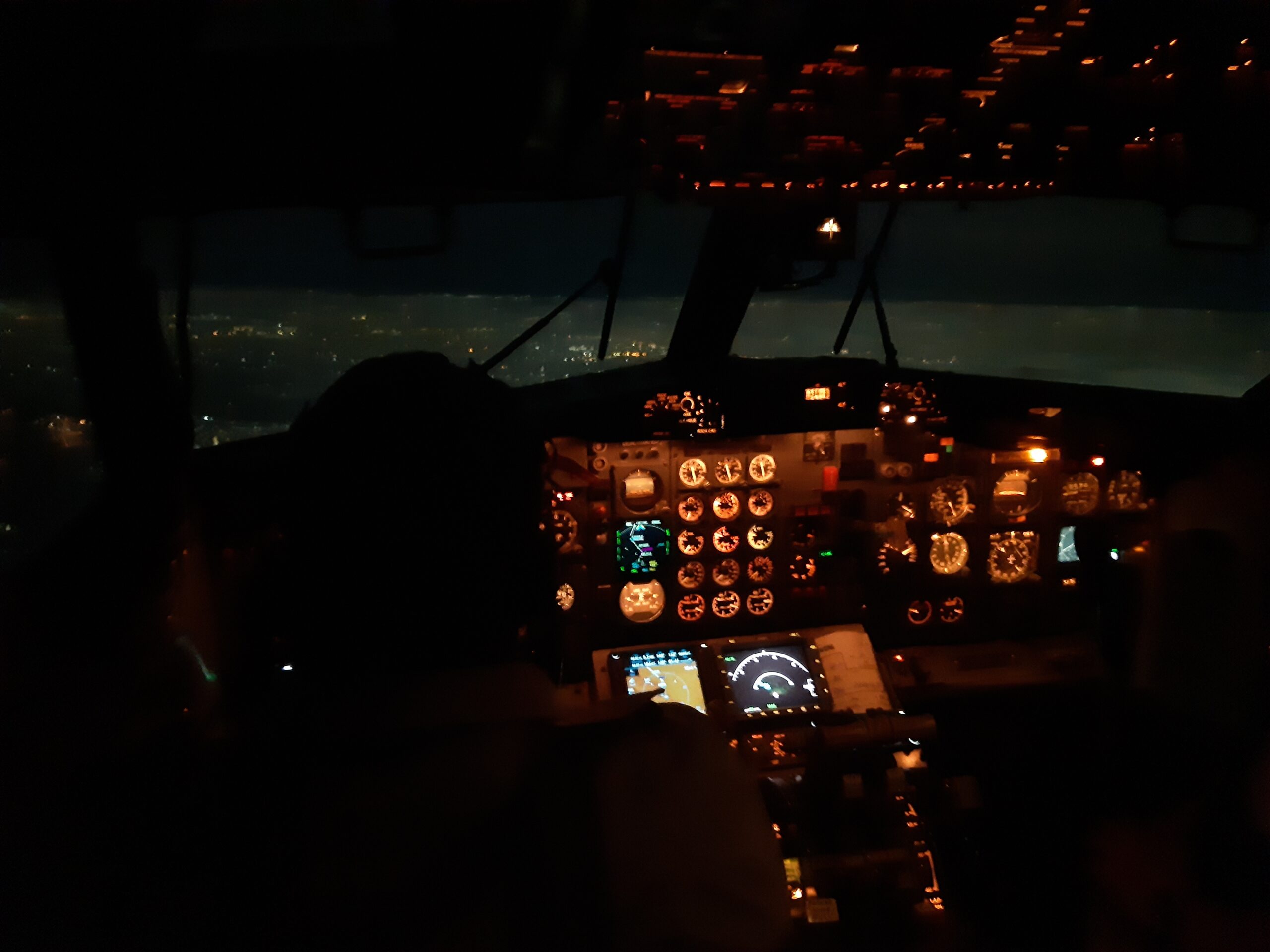
«Total 5678, wind calm, cleared for landing 09 right», said the tower at 01h06; at this stage Tango Oscar was completely set for landing and the crew had already completed the landing checklist.
A very smooth landing was completed at 01h08, finishing another safe mission bringing express mail from Brazil’s southernmost capital.
You can imagine I was quite astonished by the flight I had just witnessed. For many years I had dreamt of that moment and I can only hope I could bring this feeling to you all, as that’s a unique experience for any aviation enthusiast these days.
PR-TTO parked, after a 10-minute taxi, in a position by the cargo terminal. Photos couldn’t make justice to that sight, as Total’s three active 727 (in other words, Brazil’s entire 727 fleet) were side by side, waiting for their next missions later that night.
Before we could deboard, more pictures of TTO’s cockpit.



And my special thanks to the crew, Captain André, FO Gisele and FE Folhadella, who received me so well that evening. It’s because of professionals like these that, night in and night out, express mail gets safely and on-time where it’s needed in Brazil.
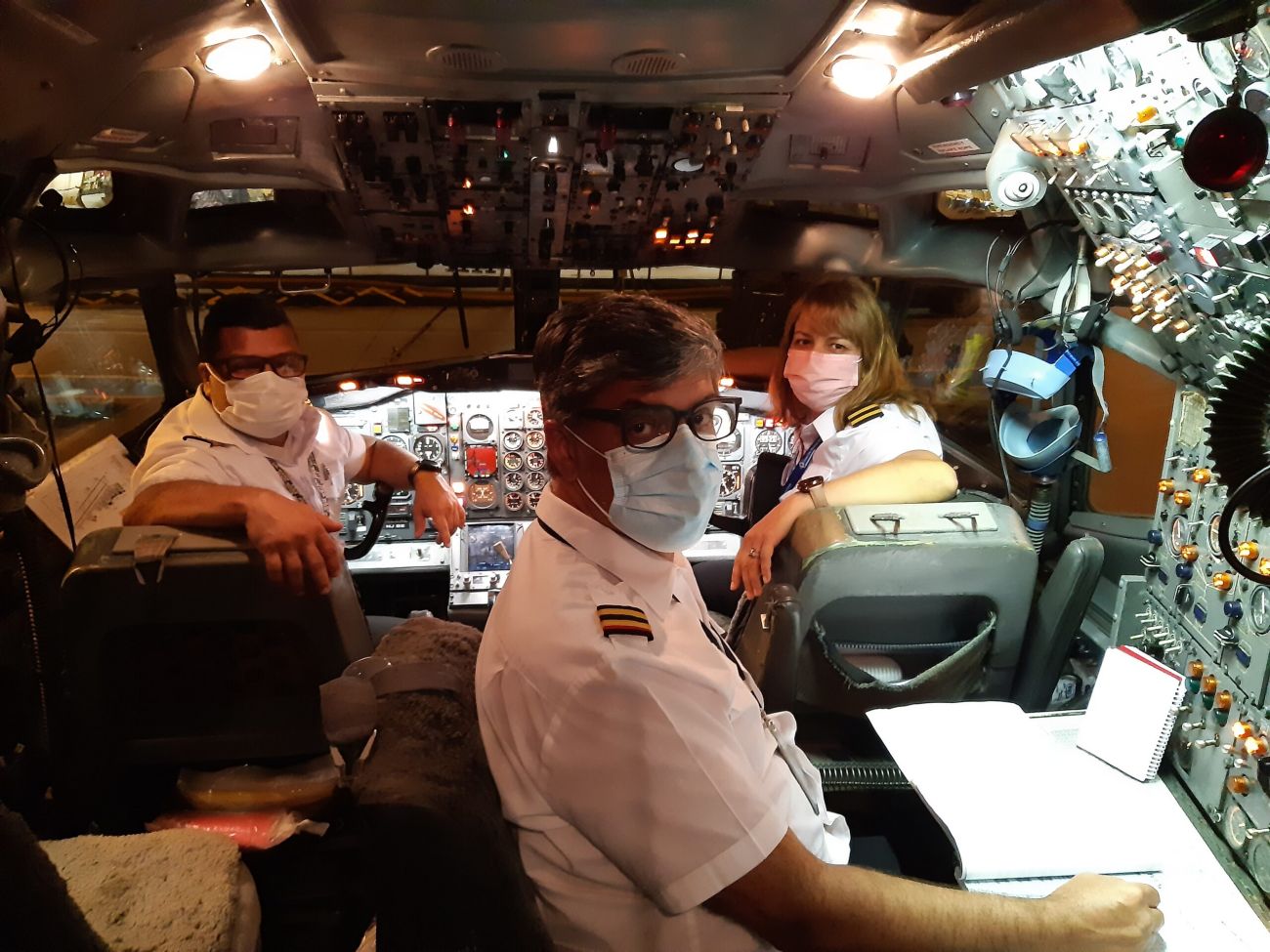
I waved goodbye to them and was taken, again in a Kombi, to Total’s dispatch room, where I started uploading pictures and writing a bit.
The mail company didn’t have time to lose, so once I got off the stairs, cargo was already being unloaded. I would fly again with TTO back to Porto Alegre later that night.

Some extras… TTL5679 GRU-POA
In a normal flight I would add my final remarks about the flight here, but I think you’d rather have some more images of the 727 operation of my return flight to Porto Alegre.
And while I took the return leg to enjoy that experience without the pressure of recording everything, I still did some photos and videos, so I hope you enjoy it as much as I did.
All in all it was a great flight back home, with the two pilots – Captain De Paula and FO Juan – having great stories of their years in the late airlines of last Century.









/https://aviacionlinecdn.eleco.com.ar/media/2022/01/20211229_031730-scaled.jpg)
Para comentar, debés estar registradoPor favor, iniciá sesión